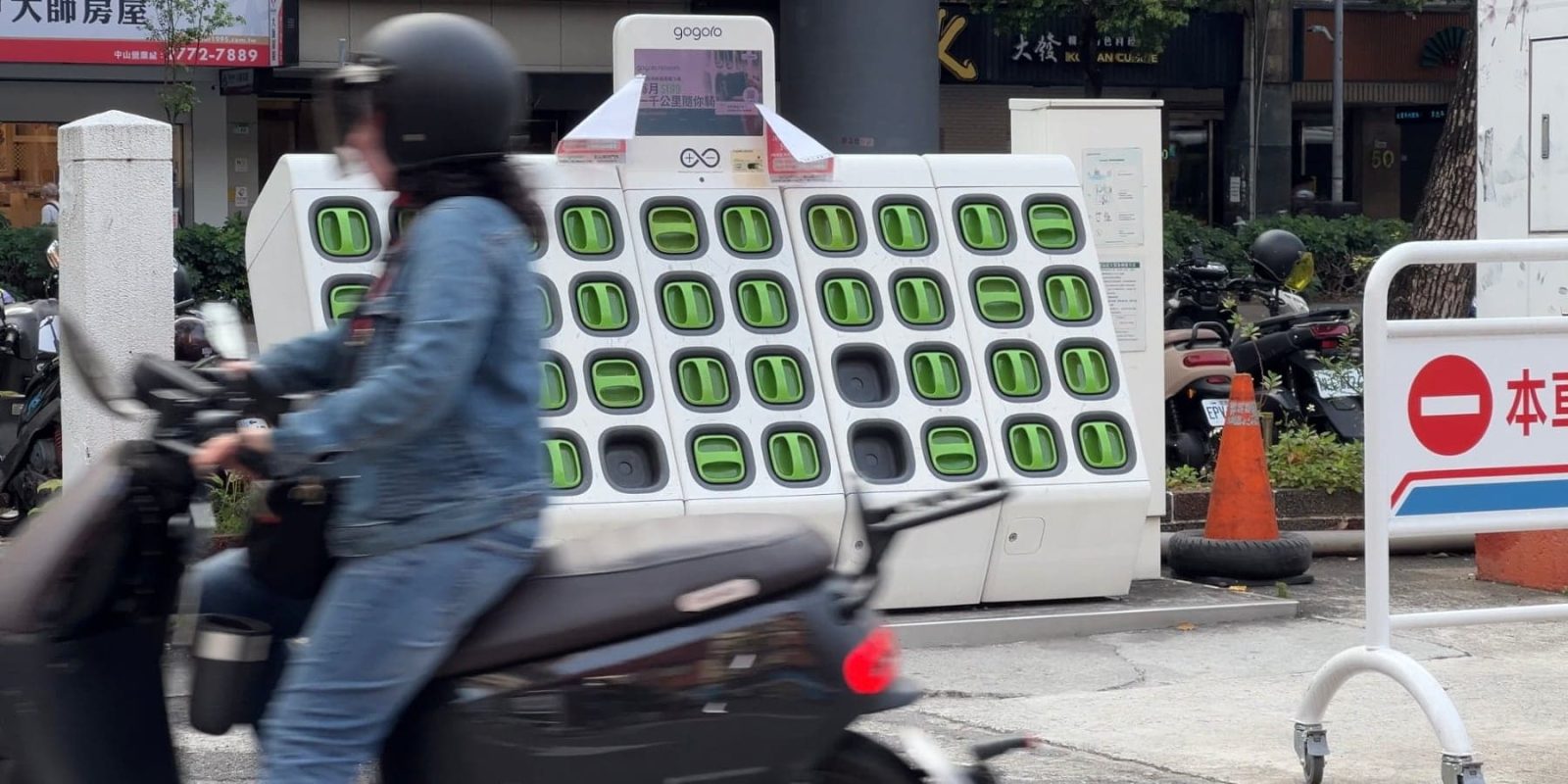
The largest earthquake to hit Taiwan this century rattled the entire island overnight, collapsing buildings, damaging roads, and shutting down train and subway services. Gogoro’s electric scooters quickly picked up the slack, providing one of the only accessible transportation options left and providing free rides.
Earthquakes are a regular occurrence in Taiwan but are usually much lower-intensity tremblors. This morning’s 7.4 magnitude quake is the largest to impact the island in 25 years.
The quake struck just off the east coast of Taiwan at 07:58 local time, as rush hour picked up and millions of commuters were traveling to work.
According to the Associated Press, “Traffic along the east coast was at a virtual standstill after the earthquake, with landslides and falling debris hitting tunnels and highways. Train service was suspended across the island of 23 million people, with some tracks twisted by the stress of the quake, as was subway service in Taipei, where sections of a newly constructed elevated line split apart but did not collapse.”
Scooters are the most efficient form of transportation in Taiwan, where they outnumber cars 2:1. They can still maneuver past standstill traffic like the island saw in many cases this morning, as well as navigate narrower passable sections of damaged roads. At a time when train, subway, and bus services are cut off in natural disasters, scooters become a lifeline for those needing access to quick transportation.
Gogoro, the largest electric scooter maker in Taiwan and operator of a massive distributed battery-swapping network, is no stranger to such emergencies. The company’s electric scooter batteries also serve as emergency backups to around 20% of traffic lights in Taipei, keeping them running during massive power outages.
In one such nationwide power outage in 2022, gas stations couldn’t pump fuel yet Gogoro’s GoStations ensured that riders of electric scooters never lost power or the ability to swap in freshly-charged batteries.
Thousands of such battery-swapping stations dot the island, each holding dozens or hundreds of swappable batteries. Riders simply roll up, swap their partially depleted batteries for freshly charged batteries, and roll out in seconds.

The company reported that its GoStation network, which is constantly monitored from a command center that tracks operations as well as weather patterns and massive events, never ceased operations throughout this morning’s quake and its aftermath.
The company also operates a GoShare network of shared electric scooters. It normally requires a membership that allows riders to hop on one of countless green electric scooters. Gogoro announced this morning that it was opening up the network to provide free GoShare rides to residents of Taipei and New Taipei City, the island’s largest metropolitan area. As of the time of publishing, the area has yet to regain metro operations after MRT shuttered train services in the aftermath of the earthquake.
Electrek’s Take
I’m shocked by the devastation seen in Taiwan, which has rattled me even further as I just returned from the island less than three days before the earthquake hit. I’ve already seen pictures of rubble where I had recently been standing. I also had spent days there riding the very electric scooters that are right now providing one of the only forms of transit available to millions of people, so I have a keen sense of just how important they are now for anyone seeking emergency services or needing to find family.
Having seen just how hard Taiwan can be to navigate by car even in the best of times, I can tell you that much if it will be impassible to four-wheeled vehicles right now. Scooters were already the only realistic way to get around dense areas of the island at certain times of the day (see the video below that I shot just days ago above New Taipei City). Now, more than ever, they’ll be the only way to quickly navigate much of Taiwan.

At times when even combustion engine scooters are limited by the availability and access to gasoline, these electric scooters keep moving and maintain access to battery-swapping stations that are abundant as every 200 meters (650 feet) in cities. There are even enough swapping stations to completely circumnavigate 1,000 km (600 mile) around the island.
It’s nice to see electric car companies offer free charging during disasters, but the benefit is largely meaningless. In the space that a GoStation can keep hundreds of scooters running, you could fit two or three Teslas supercharging, for example.
Today’s events were a potent reminder of the potential of widely distributed battery swapping stations like Gogoro’s and the mass adoption of light, efficient electric vehicles that use them – but a reminder that we nonetheless wish we didn’t have to receive.
